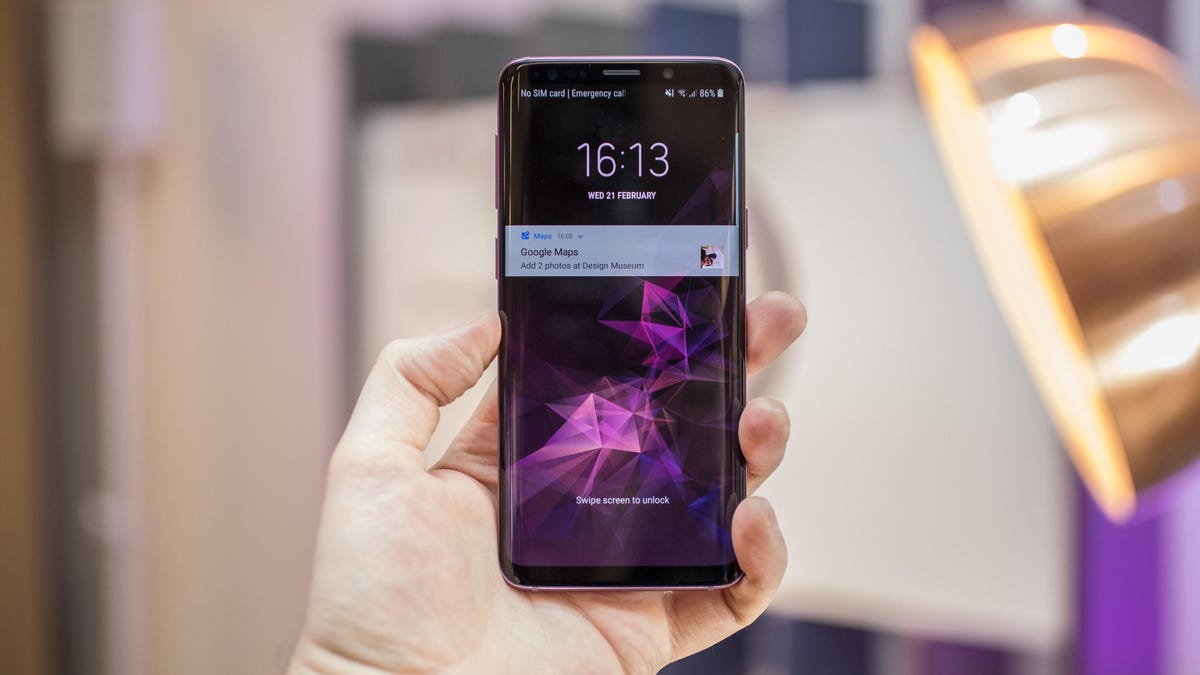How the Galaxy S9 marks a big coverage boost for T-Mobile
Samsung's latest flagship phone is one of the first to tap into new spectrum being deployed by the US carrier.

The Galaxy S9 packs a lot of new specs, but for T-Mobile customers, it's the 600 megahertz compatibility that may be the most exciting.
The Samsung Galaxy S9 and Galaxy S9 Plus have a new camera, a faster processor and features like animated emoji characters and a new purple color scheme -- in other words, par for the course for a new phone.
But if you're a T-Mobile customer, you've got another reason to pay attention.
More from Mobile World Congress
That's because the Galaxy S9, which was unveiled ahead of the Mobile World Congress trade show on Sunday, will also be able to tap into the 600 megahertz band of spectrum, a large swath of airwaves T-Mobile has been deploying across the country over the last few months. That particular band, which T-Mobile purchased for $8 billion in a government auction last year, is seen as useful because it runs at a lower frequency, meaning it can stretch across long distances and go through walls.
As a result, phones like the Galaxy S9 should be able to get better coverage in rural areas -- a traditional weak spot for T-Mobile -- and inside office buildings in more crowded metro areas. Verizon and AT&T used a similar band of spectrum to power their early LTE networks.
While T-Mobile has improved the speed and coverage of its networks over the past several years, the carrier still has significant gaps in rural parts of the nation, and still lags behind Verizon and AT&T on total nationwide coverage. The 600 MHz spectrum will allow T-Mobile to even the field. The company began using the airwaves last year and now covers 738 cities and towns across 30 states.
"The GS9 and GS9+ are the fastest Samsung phones ever, and they light up all of the advanced capabilities on T-Mobile's LTE network -- including 600 MHz," T-Mobile Chief Technology Officer Neville Ray said in an e-mail.
The Galaxy S9 isn't the first to tap into the 600 MHz band -- that honor belongs to last fall's LG V30 . But the V30 wasn't a big seller, and the Galaxy S9 will likely mark the first phone that gets broadly adopted to take advantage of T-Mobile's big coverage boost.
The Galaxy S9 and V30 won't be alone for long. T-Mobile said it plans to launch more than a dozen phones with the capability this year, ranging from budget devices to superphones.
In addition, T-Mobile touts the phone's trio of Gigabit LTE technologies called 4X4 MIMO, carrier aggregation and 256 QAM, which is supposed to give the Galaxy S9 a 20 percent speed boost over the GS8. For a better definition of these highly technical terms, go here.
While this technology isn't unique to T-Mobile -- every major carrier has embraced these speed-boosting techniques -- the company says it has rolled them out to nearly 5,000 cities across the US.
Galaxy S9 and S9 Plus: Hands-on with Samsung's iPhone X fighters.
MWC 2018: All of CNET's coverage from the biggest phone show of the year.

